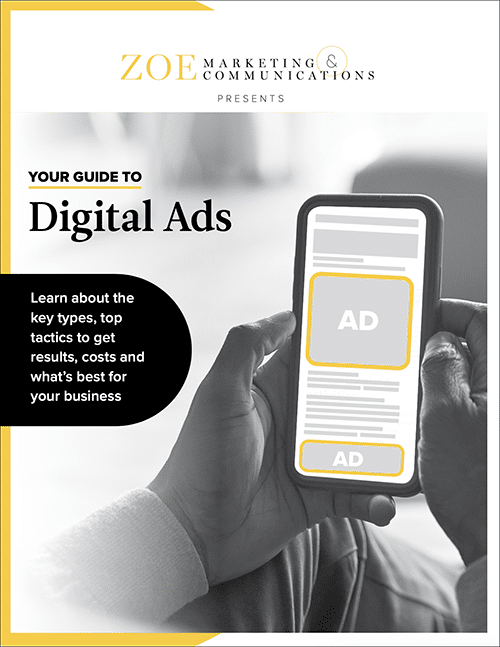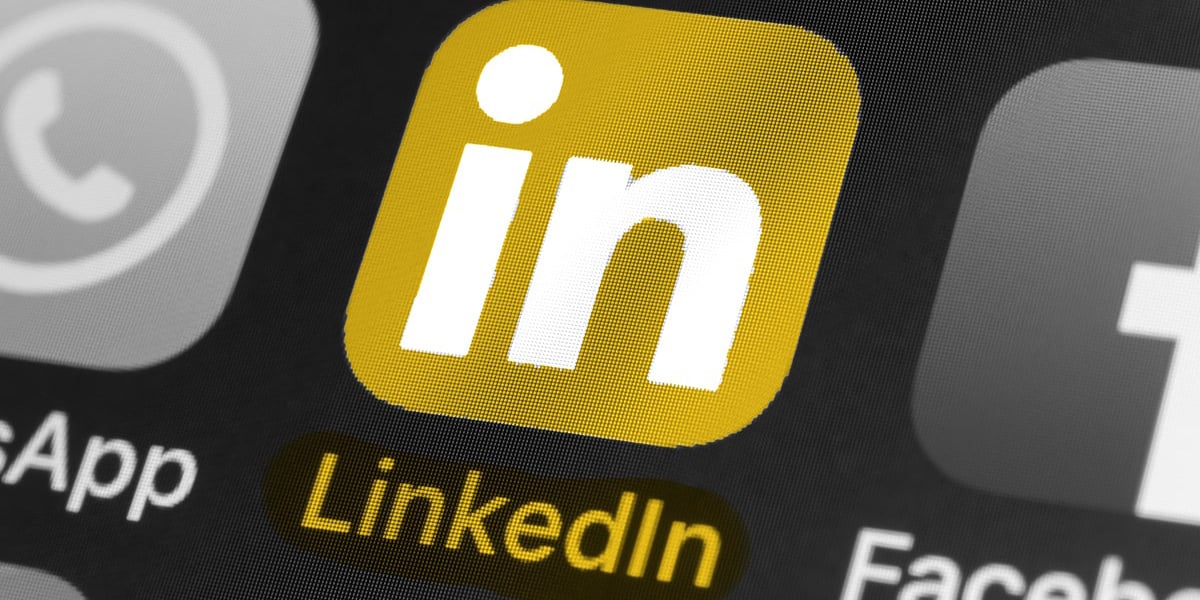LinkedIn is a powerful tool for visibility — especially on Google. The challenge? Getting employees to use it.
At Zoe Marketing & Communications, we’ve seen the benefits of LinkedIn engagement but also understand the struggles. Time, confidence and uncertainty can all be barriers.
Encouragement and practical strategies make all the difference.
Let’s look at why LinkedIn engagement matters, plus six ways to make participation easier. You’ll gain actionable ideas to engage employees (without pressure!), so you can strengthen both their personal brand and your company’s online presence.
FREE GUIDE
Download Your Digital Ads Guide
Learn how digital ads can help your business, including the tools, techniques and strategies to create successful campaigns.
Why employee LinkedIn engagement matters
Google favors content from real experts, often ranking employee posts above company pages.
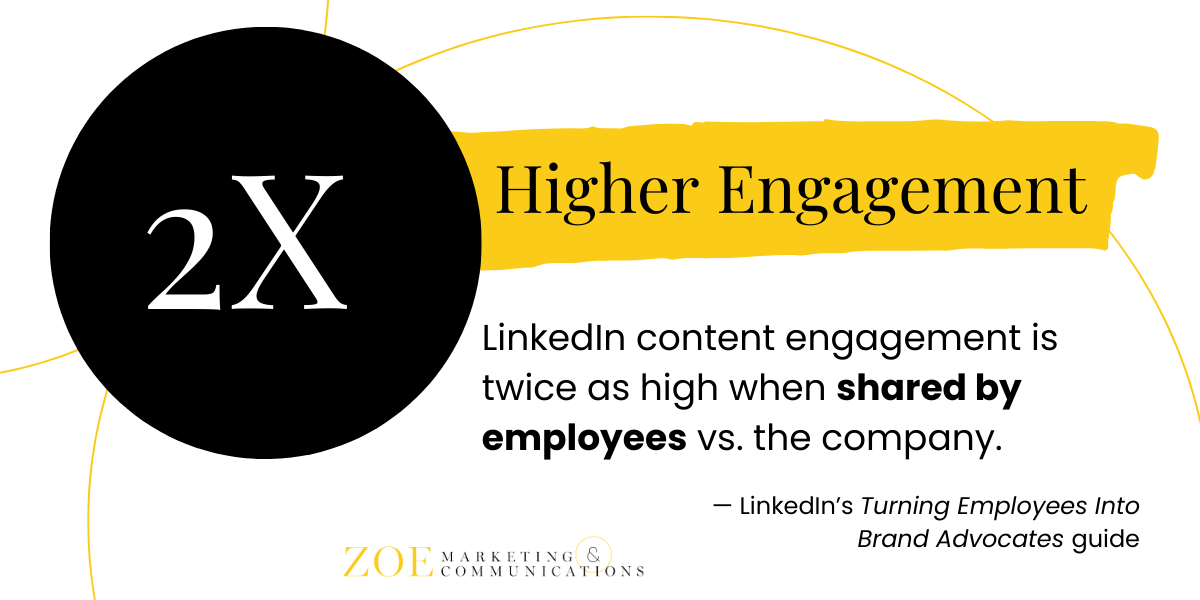
- Expands reach: Employee posts get two times more engagement than company posts.
- Boosts credibility: Google values authentic expertise, helping both employees and your brand.
- Improves search engine optimization (SEO): Regular LinkedIn activity increases search visibility.
- Humanizes your brand: Employees make your company feel more relatable.
A few key disclaimers
- Provide guidance, not rules: Offer tips but let employees post authentically.
- Encourage, don’t require: Suggest engagement rather than making it mandatory.
- Respect individual styles: Employees should feel comfortable sharing in their own way.
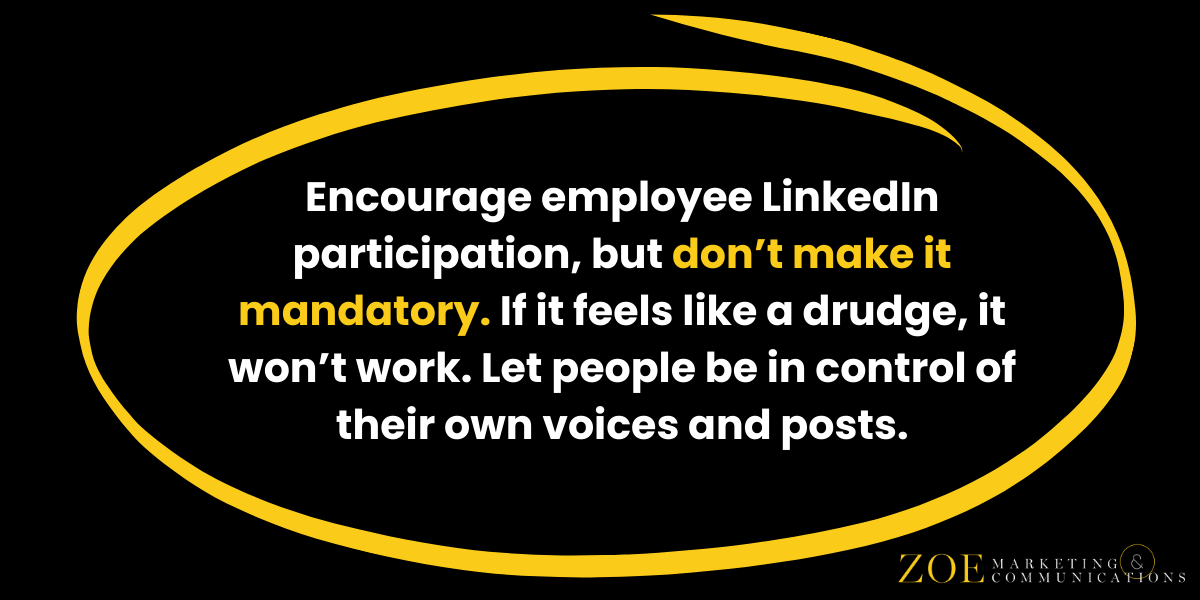
6 ways to get employees posting on LinkedIn
1. Make a case for LinkedIn
Posting can feel intimidating. Help employees understand the benefits.
- Hold a team meeting or send a memo: Show how LinkedIn builds credibility and expands networking.
- Highlight real employees who’ve benefited: Provide examples of professionals who’ve boosted their careers.
- Frame participation as an opportunity: Emphasize that it helps them first — your company benefits as a byproduct.
2. Offer guidelines and training
Provide structure with clear best practices. This might include:
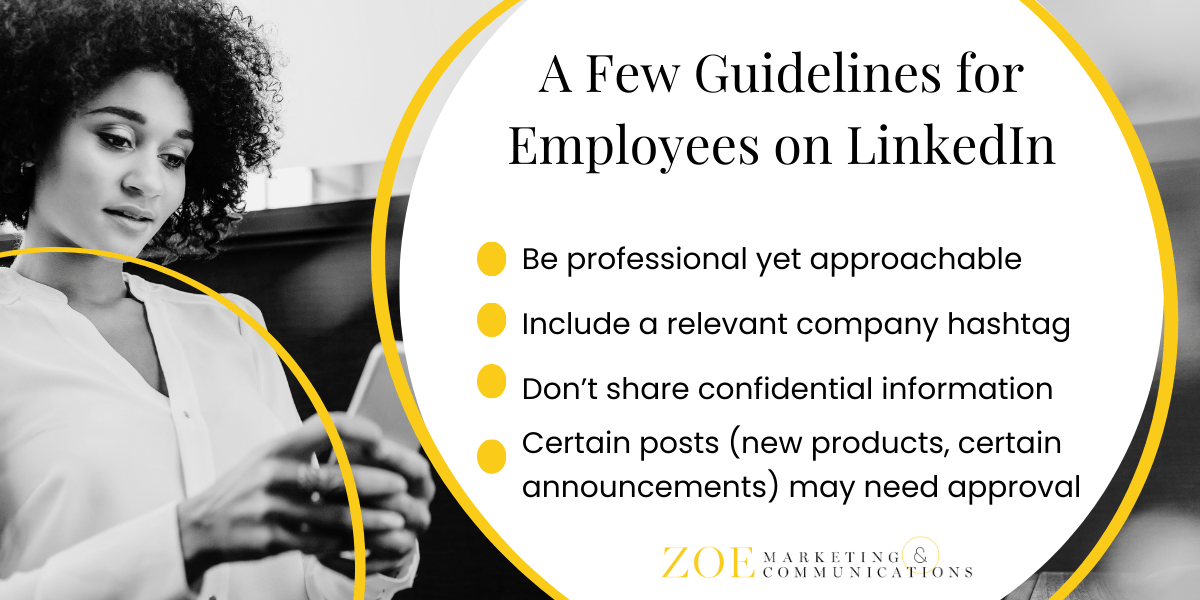
- Profile tips: Use a professional photo and keep bios up to date.
- Posting ideas: Share personal stories, industry insights, professional milestones and relevant articles. Even weekly or a couple times a month helps.
- Engagement ideas: Interact with content with reactions and comments and by resharing posts that resonate.
- Company guidelines: Maintain professionalism, steer clear of sensitive topics and include relevant hashtags.
3. Encourage individuality
Employees should develop their own voice. Encourage posts like:
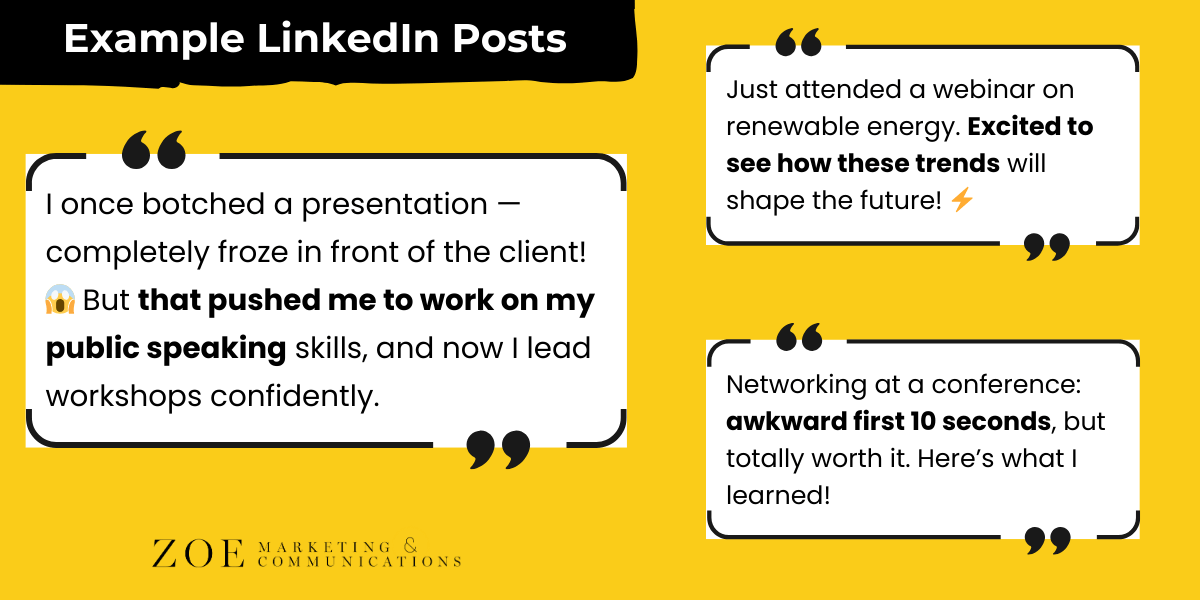
- Personal stories: “I once botched a presentation, but it pushed me to improve.”
- Industry insights: “Attended an AI webinar — excited about these three trends!”
- Humor: “Networking at conferences: awkward at first, but totally worth it.”
4. Make posting easy
Posting takes time and energy. Make it easy by supplying:
- Share branded visuals: Provide quick stat posts and infographics.
- Use scheduling tools: Free tools like Buffer let employees plan posts ahead.
- Send weekly prompts: For instance, “What’s the best career advice you’ve received?”
- Automate updates: Use Slack or email to share easy-to-post content ideas.
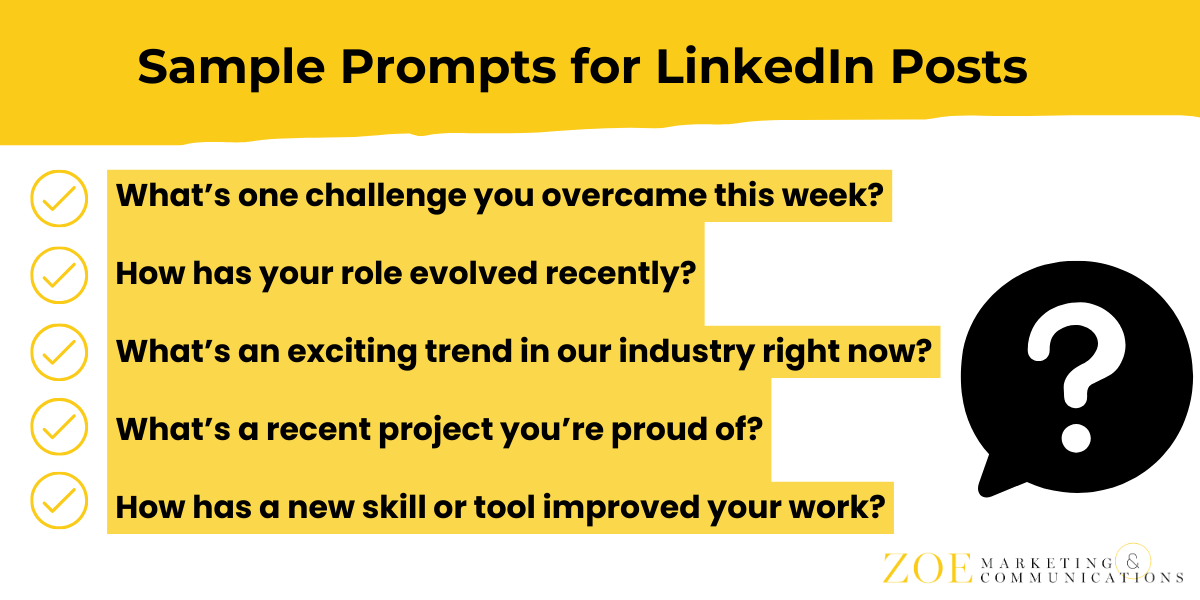
5. Provide content calendars and templates
Help employees stay on track.
- A content calendar: Highlight events, blogs and company milestones.
- Post templates: Offer examples for sharing articles, project updates and reflections.
6. Incentivize participation
Make LinkedIn engagement fun and rewarding.
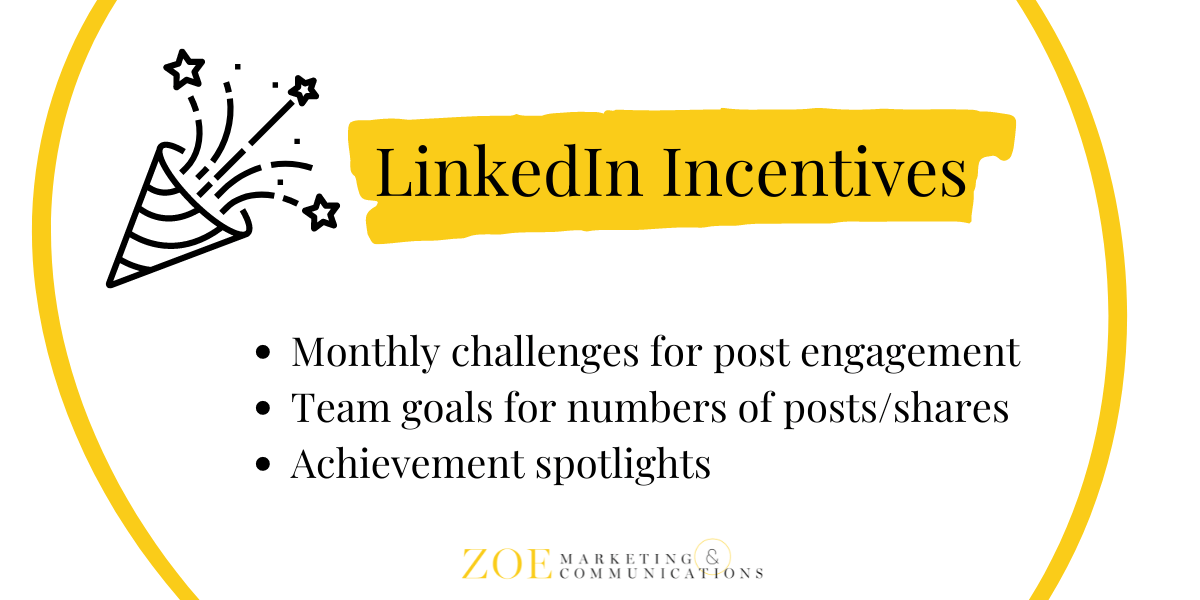
- Monthly challenges: Recognize employees with the best-performing posts.
- Team goals: Celebrate milestones like reaching a set number of posts or interactions.
- Spotlight success: Feature engaged employees in company emails or meetings.
Next steps for a stronger LinkedIn strategy
A supportive approach makes LinkedIn more accessible and enjoyable for employees. With guidance, encouragement and the right tools, you’ll boost engagement without forcing it.
Need help shaping your company’s social media strategy? Talk to us at Zoe Marketing & Communications. We can help you develop a content plan that inspires both employees and prospects.
Not ready for an agency yet? Keep learning about:
Kim Kovelle
As Zoe Marketing & Communications’ content manager, Kim Kovelle brings over 20 years of writing and editing experience in metro Detroit. She has strong roots in community journalism and a knack for making complicated topics make more sense.
